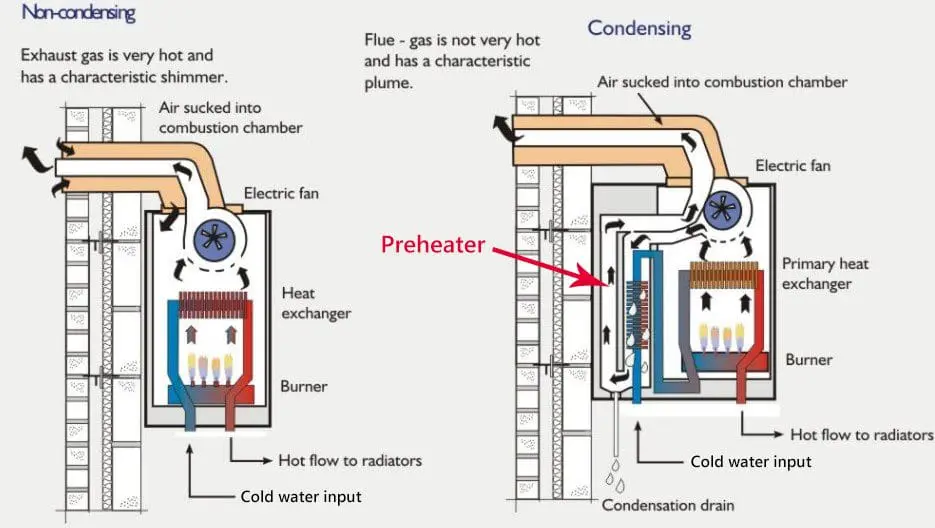More specifically, condensing tankless water heaters. The non-condensing kinds don’t suffer from this problem…but they’re not commonly used because the condensing ones are much more energy efficient for not much more cost.
A tankless water heater produces hot water on demand. When you turn on the hot tap it senses the water flow and turns on its burners to heat the water flowing through its innards. Since it’s only in operation when hot water is being used it doesn’t have to keep a large tank of water at a high temperature 24/7. They’re more expensive than traditional water heaters, though. OTOH you can’t run out of hot water1.
But the exhaust from a tankless heater is pretty hot (it burns a lot of gas to heat water quickly). In the non-condensing version that extra heat just gets dumped out the flue, wasted.
A condensing tankless water heater uses the exhaust gas to pre-heat the water it’s processing, boosting the overall energy efficiency to the 90% or higher range.
Here’s a diagram showing the differences:

So condensing looks like the hands-down winner.
But…
Because the preheater cools the exhaust gas, the water in the combustion gases can, and does, condense. Moreover, it isn’t pure H2O. It’s got other stuff in it, including unburned natural gas, which lowers its pH to 2 – 3. Which is the acidity of pure lemon juice.
Granted, that’s not a powerful acid, like sulfuric or hydrochloric. But it can have long-term effects on many materials, such as copper pipe:

Now that’s what I call corrosion!
To learn more about tankless water heaters check out this site. Also, the corrosion can be avoided by using a cheaper condensation line (e.g., plastic) or by inserting a neutralizer — which nullifies the condensate’s acidity — before routing it to a copper line.
as my daughter discovered one day when she fell asleep in the shower for about 45 minutes ↩














































